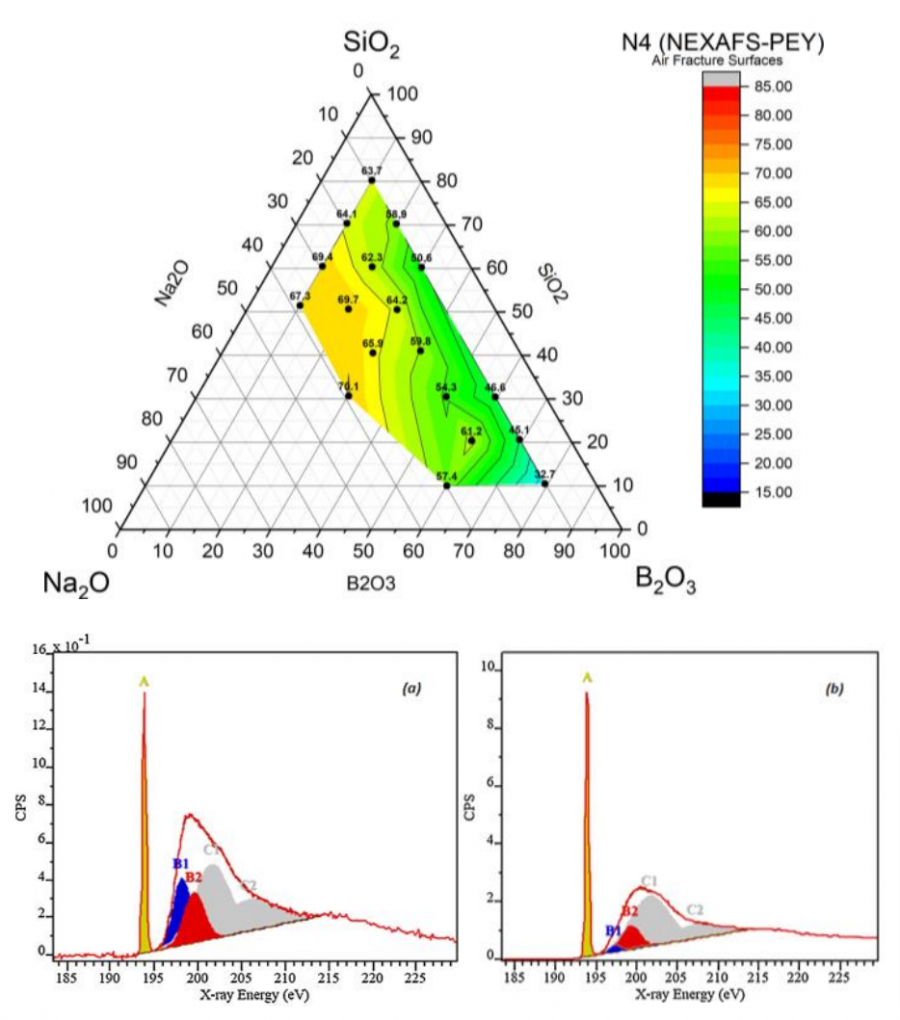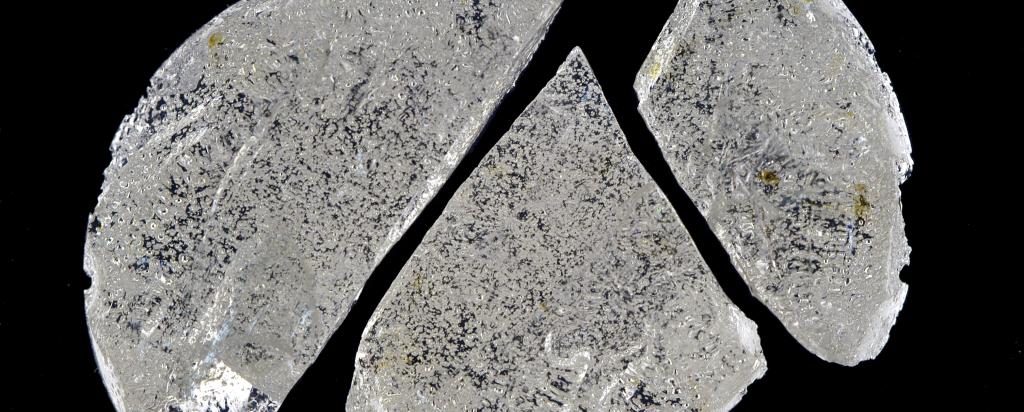

The impact of boron on glass surface properties
Borosilicate glasses represent a very important commercial and scientific glass system, forming the basis for a number of technical glass compositions in modern applications such as display substrates, cover glasses for mobile devices, pharmaceutical packaging, and many others. Within the bulk structure of such glasses, boron is known to be a key actor, as it exhibits intriguing and composition-dependent changes in coordination state that often drive properties. As such understanding the impact of boron on glass surface properties is an ongoing challenge in the development of novel technical glasses. Prior work has shown that the behaviour of boron is often linked to its structural coordination environment—a fact well-established in bulk glass properties, but also observed with surface reactivity.
Our research

Near-edge X-ray Absorption Fine Structure (NEXAFS) spectroscopy was used to map ternary contour plots to highlight composition dependences
In work published in the Journal of Non-Crystalline Solids, researchers from Corning Glass and La Trobe University used the Soft X-ray Spectroscopy beamline at ANSTO’s Australian Synchrotron to understand the role that the boron atoms played both in the bulk but more importantly also in the very surface of the glass. The researchers furthermore studied the influence that air and the moisture within air had on the surfaces by investigating samples that was fractured in air as well as in-situ immediately prior to the measurement as well as samples that had been fractured and exposed to water moisture for longer periods of time. The experiments on the Soft X-ray beamline enabled the team to examine the way the atoms and molecules at the top 10 nanometres of a sample’s surface interact with each other, providing valuable insight into how a the glass affects, and is affected by its environment.
This helps researchers to understand the suitability of the glass for different applications, how the glass degrades and how it can be improved.
Our impact
By understanding how boron is behaving at the surface the researchers from Corning and La Trobe were able to understand the considerable implications these findings have for rational design of new glass compositions wherein reactivity and adsorption at boron-related surface sites can influence performance, for example adhesion, durability, and electrostatic charging, especially in tandem with the optimization of bulk properties.